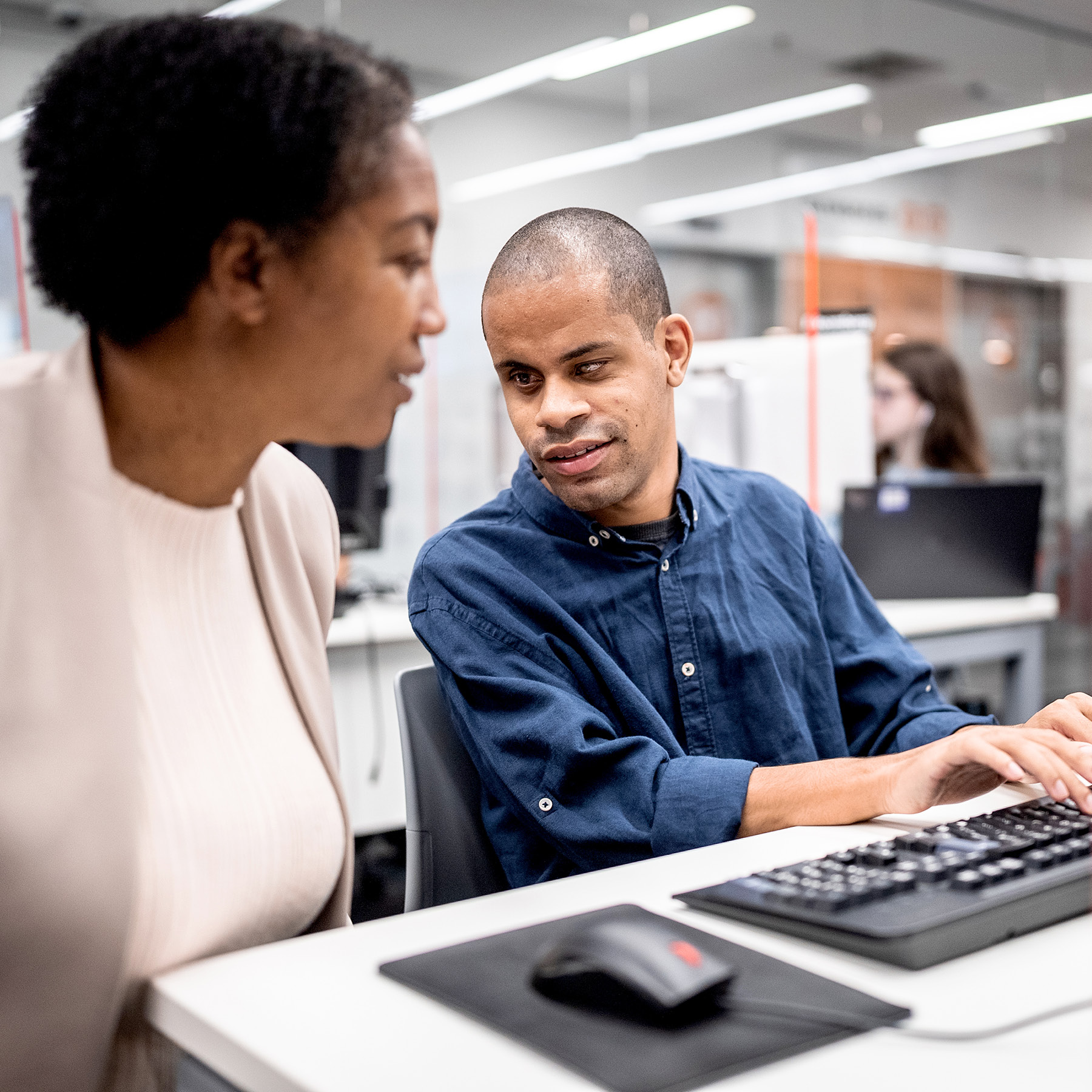Language
You can read the magazine in one of the following languages
Geolocation
You can read the global content or the content from your region

People living with disabilities don’t usually get the representation they need in the workforce, yet they are some of the most talented individuals.
With the right tips, you can access this massive talent pool, boost your inclusivity culture and build your reputation. It’s a win–win for both parties, so you want to get it right as a brand or recruiter.
How do you recognize bias? How do you make your job application and recruitment process more accessible?
It is time for companies to start embracing inclusivity by hiring people from various walks of life due to the many benefits involved. Access to a diverse talent pool of skills that often go overlooked comes with a fair share of upsides, not just for the hired but also for the company and the entire community. So, why hire people with disabilities?
A large portion of the labor force comprises people living with disabilities, so there is a huge potential for finding highly talented workers. Most hold back because they fear prejudice, but beyond their disability, they make perfect candidates. Besides, they offer creative solutions to problems, and you are sure of diverse perspectives that will help you beat the competition.
When the public knows about your company’s inclusivity policies and how you create a favorable working environment, even for disabled people, they can easily trust you.

You will attract talent and improve employee retention, which means increased productivity.
Your image improves not only for clients but also for potential employees. A company with a stellar reputation for social justice is attractive to job seekers, and you can easily negotiate for the best hires.
Did you know there are also monetary benefits when your company embraces diversity? Organizations and agencies are keen on providing credits and reimbursements when you have employees with special needs. Your hires will enjoy accessibility features like ramps and may receive special IT training.
There are many other benefits involved when your company has a remarkable reputation. You will attract talent and improve employee retention, which means increased productivity. In the same light, thanks to your reputation, your client reach will increase as more people want to do business with you. With all these changes comes massive growth for your brand.
To remove hiring barriers you need to evaluate your hiring process from start to finish and provide accessibility and equity for all job seekers.
A disability is any condition that interferes with an individual’s daily life, affecting how they perform various activities or interact with other people. It can take various forms and affect an individual’s mental health, communication, hearing, sight, learning, memory, mobility and social life. While some people are born with these impairments, some develop them after medical conditions or injuries.

It goes past what you see; avoid focusing on the wheelchair, cane, nervous tic or any other impediment.
The first step to overcoming bias is to recognize when it happens. Unconscious bias is quite common in the workplace and is the leading reason for inclusivity issues. Hiring managers are always advised to look beyond the disability and focus more on the candidate’s skills and experience level. It goes past what you see; avoid focusing on the wheelchair, cane, nervous tic or any other impediment.
Some of the best candidates often go overlooked, with some generally assuming they will have difficulties handling the job, but far from it. You can tell that something is amiss when people living with disabilities cannot apply due to barriers in the application process or never get shortlisted or even pass their interviews. That’s when you know you may have unconscious bias, and it is time to address it.
If you want to remove the barriers to hiring people living with disabilities, it starts with the application process. Is the site accessible to allow diverse people to apply for the job? There are cases where companies miss out on potential candidates because the application and interview process weren’t accommodating. You may need to run an accessibility audit for your website to make sure people living with disabilities can interact with your content and documents.
Screen readers are software apps or websites used to cater to people with visual impairments. Developers create this accessible feature to allow alternative text to images and content, ensuring everyone can decipher the messages and instructions. Thanks to screen readers, candidates can easily follow the instructions on a job application and successfully apply.
Another struggle for people with disabilities is that sometimes, the application format available is difficult or impossible to use. This can easily turn them away as they move to sites providing more accessible application options.

Another step to promote inclusivity is to make interviews remote, where screening people, even when they have mobility issues, will be easier.
You need to implement accessibility checkers and apply the suggestions, and one effective solution is converting the application format to HTML. Such documents are more flexible for people with disabilities and will make job applications easier.
If you are looking to attract a diverse talent pool, it is important to focus on how accessible your forms are. Web forms must be perfectly designed so that people can easily access them and navigate through each one, regardless of their disabilities.
This is especially important, because sites usually post various forms to help collect candidate information and facilitate applications. You must frequently check that they are working perfectly, correctly labeled and accessible, thanks to assistive technology.
Now that the application process is more accommodating and you have access to a talent pool of people living with disabilities, what next? It’s time to shortlist candidates and schedule interviews. Another step to promote inclusivity is to make interviews remote, where screening people, even when they have mobility issues, will be easier. This is important if your offices are far away or the building is not yet accessible.
You can create a culture of inclusivity for your brand’s reputation and provide a livelihood for people with disabilities. This change cannot happen overnight; it can only happen gradually when certain measures are in place.
The more you raise awareness about unconscious bias and work toward managing it, the more your work culture will improve. You can conduct training for hiring managers and recruiters to recognize bias and make the brand more inclusive.

If you train your hiring managers to identify talent beyond physical impediments, your business will earn an impeccable reputation and benefit monetarily.
Other employees will also need education on interacting and working with people with disabilities to promote understanding and cohesion. While you’re at it, remember to keep the communication channels open for new hires and other staff members to raise their concerns when they need solutions.
From the application to the interview and orientation process, ensure that you have representation, which applies to gender, race, physical abilities and other aspects. Making representation mandatory for various teams will promote a culture of inclusivity, and the public and potential candidates will see this.
There is potential in the labor force waiting to be tapped. People living with disabilities are being recognized for their talent and diverse and innovative problem-solving skills to help benefit companies. If you train your hiring managers to identify talent beyond physical impediments, your business will earn an impeccable reputation and benefit monetarily.
There are so many upsides when it comes to hiring people living with disabilities, not just for the individuals but also for the brand.

David Gevorkian
Contributor Collective Member
David Gevorkian started Be Accessible because of his passion for website accessibility and ADA compliance. He spent much of his career working for financial institutions creating websites and mobile applications. He earned his master’s in business administration from Salve Regina University on Rhode Island. David is an advocate for creating web interfaces usable by all people. For more information visit https://beaccessible.com/about/